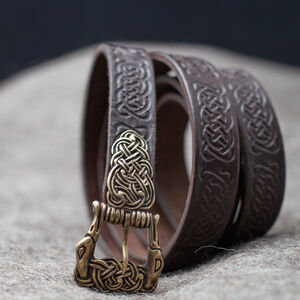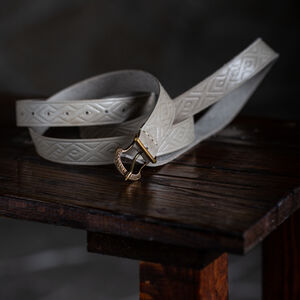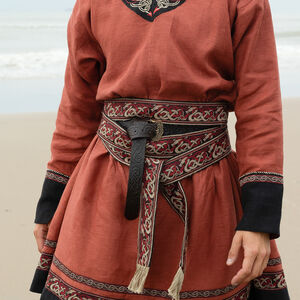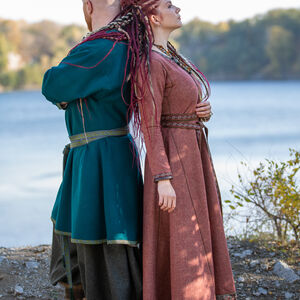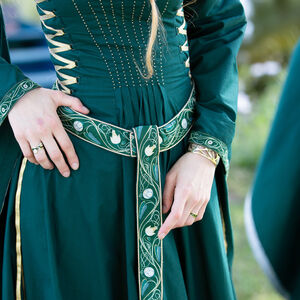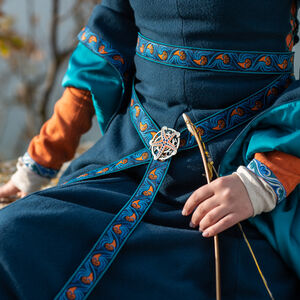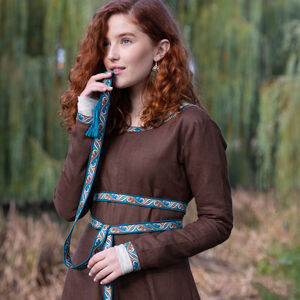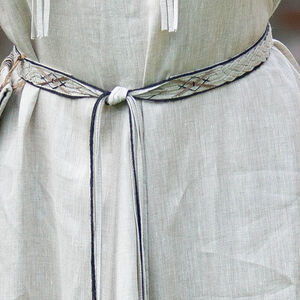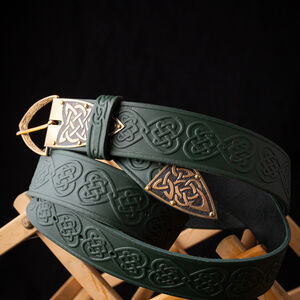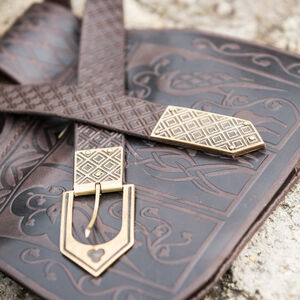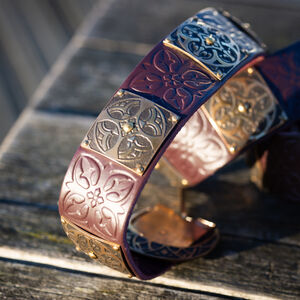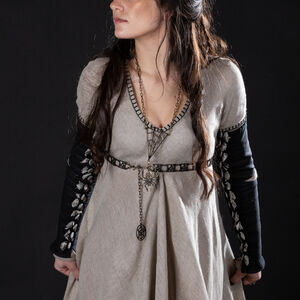Medieval Belts for Sale
The belt belongs to the oldest accessories created by primitive man. Initially, the belt has been used to keep up lower body clothing, such as trousers, pants, skirt. Also, the belt held the flaps of the robes closed to keep warmth.
Symbolism of an Ancient Belt
Belt in ancient folk beliefs was a symbol of a road, a way through the mythical and the real obstacles. Medieval belts were considered as apotropaic charms that protect people from evil forces, jinxes, and simple earthly troubles, and as talismans, contributing to the fortune and success of the one who wears it. A child could get his first girdle immediately after birth, and he could carry all his life, without removing. Also, the belt was often put in a coffin after the death of the owner, the person could not be buried unbelted.
Sword belts, pouch belts: usage of the Belts
Middle ages belt was an indispensable functional component of any outfit. Purse, flint, knife, dagger, whip were commonly attached to the belt with laces. Men's medieval belt was visually distinguished by its simplicity as a narrow piece of leather complemented with a small buckle. Townswomen attached home furnishings and maintenance accessories to their belts, as well as small bags and pouches, named "pocket", which became the progenitors of the modern pockets. Each European woman dreamed of buying a luxurious golden ladies belt studded with precious stones and beads, just as one which is available in our medieval belts store. Nobles wore belts made of precious metals and stones, allowing them to feel luxurious and beautiful.
Belt Functions
- fixes the clothes and armor (note that padding choses and armor cuisses are traditionally tied up to the belt);
- serves as a mount for keys, money, weapons and other stuff;
- indicates the status of the wearer;
- puts the emphasis on the waist or hips;
- enriches the look and makes it more elegant;
- emphasizes your unique style!
Knight's Belt
Warfare made durable leather belt an integral part of the medieval man's garb. As a potential warrior, every man had to wear a belt. During an accolade, a man was awarded a knight belt as a sign of getting a new status. Ripping off or loss of such a belt was a great shame that can not be forgiven. Knight's belt was wide and long - about a meter and a half. Such medieval belts for sale were rare, most often they had to be custom made. Here in ArmStreet, we offer custom medieval belts, meaning that you can choose the material, color, length, width and decorations for your belt. To buy a medieval belt, you need to measure your waist, if you are looking for a knight's belt you can measure it over a gambeson or over your body armor.
How to Tie a Medieval Belt?
Usually, one of the ends of the belt was threaded onto a buckle, then tied in a knot so its free end was hanging in the front, flaunting with a massive decorated tip. It was worn at the waist or hips level parallel to the ground and was often richly decorated. At first, it was covered with just several metal accents, but with time their size and number increased, and in the 15th century part of the belt has been completely covered with rich accents. ArmStreet has a large variety of steel- and brass decorated belts that are sure to be a great addition to your garb.
The medieval belt is a kind of bearer of the "spirit of the time", and one of the essential attributes of the high Middle Ages in Western Europe.





